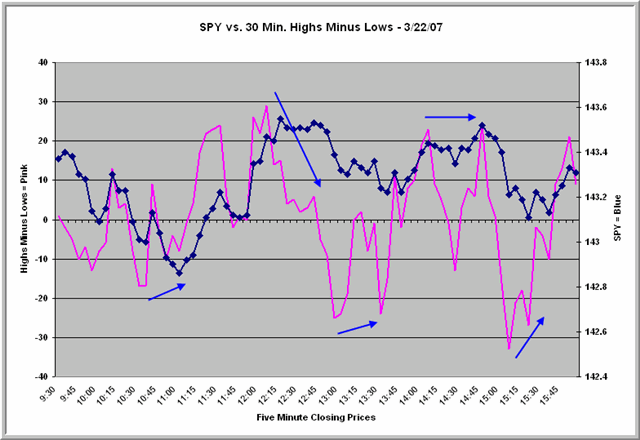Volatility Analysis By John Forman Traders Log
Post on: 16 Март, 2015 No Comment

Posted By: John Forman
Recommend on Google
By John Forman
I am not a huge fan of technical indicators, being primarily a chartist in my market analysis. That said, I do watch the volatility-based indicators to help get an idea of how the market is doing at present and what is likely to happen in the future. The two indicators I use in that regard are Bollinger Bands and Average True Range (ATR).
Bollinger Bands approach volatility from the perspective of standard deviation. The Bands themselves are plotted a certain number of standard deviations above and below a specified moving average. The most commonly used settings are 20-days for the average and 2 standard deviations of closing price. The result is an envelope of sorts which in theory should contain most trading action.
ATR, on the other hand, focuses not on price, but on total price movement. It takes into account how far the market has moved each day, both up and down, and averages that out over a specified time period (14 days for example). What you get is a measure of how widely the market is swinging as it moves. Markets with small ranges will tend to have low ATR readings, while those with larger ranges will have higher ATR figures.
Because Bollinger Bands and ATR take different approaches to looking at volatility – close to close vs. trading range – they can be used together to provide a fairly comprehensive view of the markets. More importantly, they can be used in a complementary fashion when trading.
The way I use Bollinger Bands is to look at the width of the Bands – the distance between the upper and lower lines. When the Bands are wide apart, it is because there has been a lot of price movement. When they are close together, the market has been range bound. Ranges eventually give way to new trends, so I look for narrow Bands to give me an indication of a market ready to make a significant directional move. (Note: It doesn’t work the same way with wide bands signaling consolidation because of the way trends sometimes progress.)
What ATR brings to the mix is a sense of how aggressive traders are. High ATR readings often mean a lot of speculative trading. They often come about near turning points especially bottoms – not during persistent trends. Take a look at a weekly or monthly chart of the stock market for the late 1990s and early 2000s with ATR plotted and you can see exactly what I mean.
The way we can use this in combination with the width of the Bollinger Bands is to look for a combination of narrow Bands and low ATR. It is these situations which are most likely to produce sustained moves when the market breaks the range. If ATR is running high, the break might be violent, but it is likely to be short-lived as eventually things will have to calm down. In contrast, a break coming from a low ATR reading is a move that can gradually build without too quickly getting overdone.

At the same time, we can use the changes in ATR to give us an idea of how sustainable a trend is going to be. If ATR rises quickly, that’s a good sign that the move may not last very long. A great scenario is when ATR actually declines during a trend, especially as the Bollinger Bands are widening out. This situation isn’t all that common, but when it happens, the moves can persist for a long time.
As useful as volatility indicators can be in terms of picking out “trend-ready” markets and those likely or unlikely to maintain the current price action, they are not that helpful when it comes to determining direction. The width of the Bollinger Bands can tell us when a break is likely to happen, but they won’t tell us which way. For that we have to use other tools. In my case, I focus on trends and chart support and resistance points. Other people have their own favorite tools.
Whatever indicator or method you use to determine the future direction of prices, it can be made better by incorporating volatility analysis in to the equation. Take a look and see for yourself.
For more information on Bollinger Band analysis, see Andurilonline.com
To learn more about the Average True Range indicator, go to: Trade2Win.com














